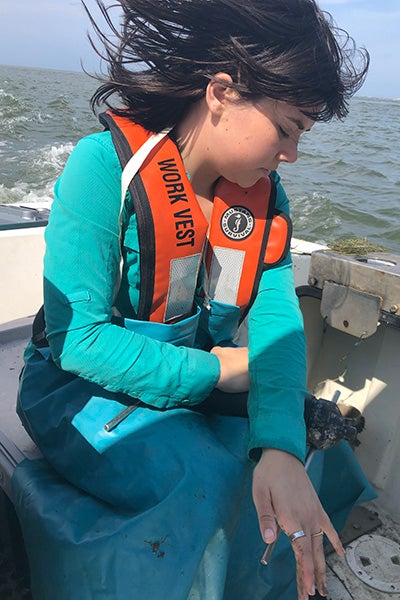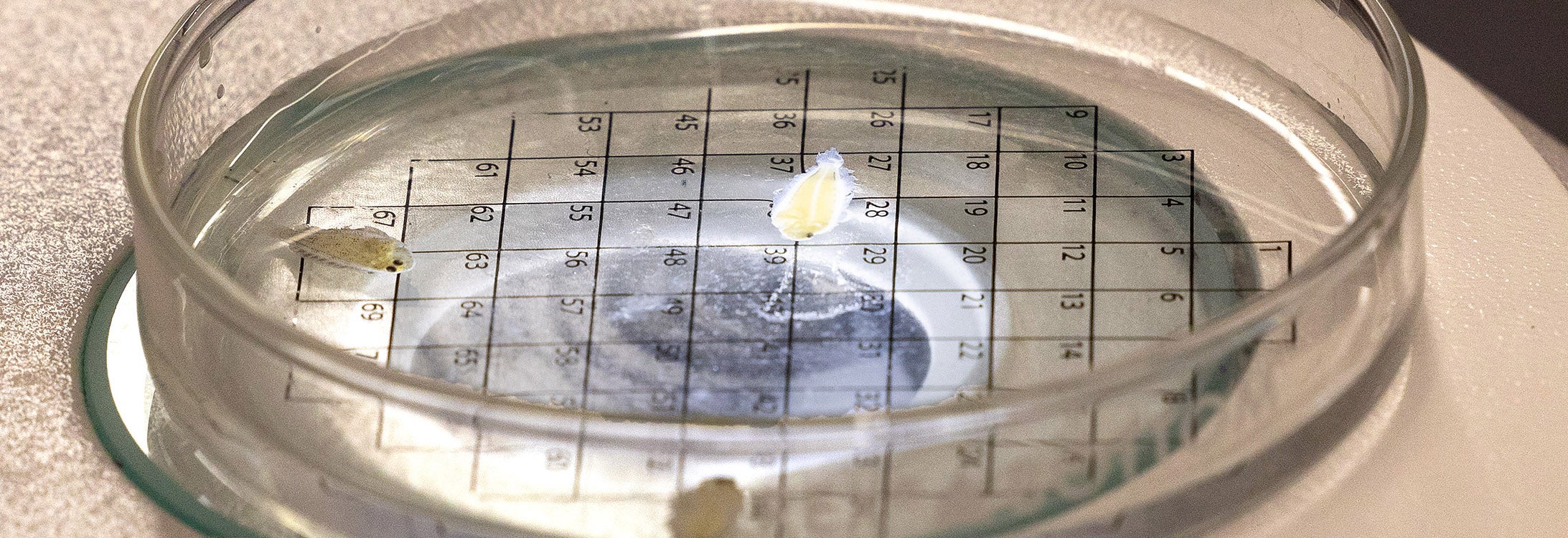RESEARCH IMMERSION
Sablefish study leads to interest in coding
This summer, Martina Van Etten has learned about sablefish, a deep-water species native to the eastern Pacific Ocean, through an internship at East Carolina University.
A junior biology major at UNC Pembroke, Van Etten was one of 12 students who participated in the STEM Summer Immersion Program funded by the North Carolina GlaxoSmithKline Foundation. The program is designed to build connections between ECU and students from the state’s minority-serving institutions with a goal of establishing pathways to public health graduate education.
The 10-week program enables undergraduate student participation in high-impact research activities, matches students with potential graduate school mentors and builds a peer-to-peer community of early career scholars to foster social and professional networks.

Van Etten works with a sound receiver while participating in flounder field work on board ECU’s research vessel Sound Byte. (Contributed photo)
In her research with biology professor Dr. Rebecca Asch and postdoctoral research scholar Dr. Kat Dale, Van Etten studied larval fish data to project changes in the distribution and abundance of sablefish stock. Using satellite data of ocean biological productivity and distribution data from the United States, Mexico and Canada, Van Etten modeled the impacts of changing ocean conditions on the abundance of sablefish offspring.
“Sablefish, known as black cod, are commercially important,” Van Etten said. “If the stock decreases, people potentially lose their source of food and job security from working in the fishery.”
To learn all that she knows about the Pacific Ocean species from a cubicle in the Life Sciences and Biotechnology building at ECU, Van Etten studied where and when fish are spawning, how different species respond to changing conditions, and whether fish are likely to encounter a “mismatch” between where they are and where their prey (or predators) are. The information was assembled from nine long-term ichthyoplankton sampling programs off the west coast from Mexico to Alaska.
“We really threw her into the deep end on taking data from the field and putting it through a model to show what is happening and what will happen,” said Dale, who served as Van Etten’s mentor. She said the deep dive into data also allowed Van Etten to learn analysis skills and code writing.
Exploring computer science
During her second week in the lab, Van Etten was coding and creating models showing how fish respond to changes in their environment. Van Etten explored a hypothesis called the match mismatch theory, and it has been a favorite for her. She described an example of this theory and her coding work. “If waters are warming, it may speed up egg hatching. If food for young fish is not in bloom yet, then the early hatching could mean they have nothing to eat,” she said. A graph displays the degree of match or the mismatch of the data.
Asch said it’s unusual for undergraduates to learn coding this early. The added skill has given Van Etten a head start and a focus she didn’t expect. Van Etten was excited to show her mom what she’d done. She had been thinking about adding a minor, and because of her experience in this project, she is considering adding a computer science degree.
Van Etten has learned from her mentors and the research that sablefish are a transboundary species with commercial and recreational fisheries in three countries. Wars have broken out over other transboundary fisheries when fish species occur in several countries that compete to use this natural resource. Finding a balance of how to share fish between countries creates challenging issues in natural resource management.
“That’s been a very cool thing about this project,” Dale said. “I’ve learned things, too. It helps me to think about my projects differently and reconnects me to the fish.”
“Teaching others what I am doing is the best way to advance the research,” Dale said. “Plus, science is fun!”
Van Etten said that having the opportunity to explore different fields through job shadowing has been a positive of the program. She had the opportunity to get out of the lab to conduct fieldwork on a boat to study flounder and shadow other biology graduate students and faculty in the department.
